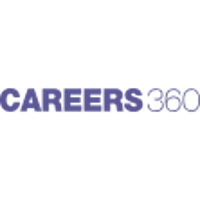NCERT Solutions for Class 12 Physics help students to understand difficult chapters like electrostatics, optics, and magnetism very easy to understand. Careers360 follows the latest NCERT syllabus and helps you get ready for board exams and even for competitive exams like JEE and NEET. Class 12 Physics NCERT Solutions are organized chapter-wise. Solutions in each chapter are simple and clear. Careers360 NCERT Solutions for Class 12 Physics subject expert-made PDFs make tough topics easier and are perfect for quick revision before exams. Students can download the chapter-wise NCERT solutions for class 12 physics using the links provided in this article. This article also includes the benefits and unit-wise weightage of class 12 Physics.
This Story also Contains
- Class 12 Physics NCERT Chapter-wise Solutions 2026- Download PDF Here
- Physics Class 12 Unit-Wise Weightage (CBSE 2026)
- Overview of Class 12 Physics NCERT Textbook Chapters 2026
- Benefits of Using Class 12 Physics NCERT Solutions 2026
- Best Reference Books for Class 12 Physics Along With NCERT 2026
- Tips to Study for Class 12 Physics Board Exam 2026
.jpg) NCERT Solutions For Class 12 Physics - Download Chapter Wise Solution PDF
NCERT Solutions For Class 12 Physics - Download Chapter Wise Solution PDF Class 12 Physics NCERT Chapter-wise Solutions 2026- Download PDF Here
The NCERT solutions for all the chapters of Class 12 physics are provided here. The solution PDFs are also available for download and offline use. All solutions follow the methods and procedures explained in the textbook.
The NCERT Physics textbook for Class 12 consists of 14 chapters. The following section provides a brief overview of each chapter.
Physics Class 12 Unit-Wise Weightage (CBSE 2026)
Understanding the unit-wise weightage in Class 12 Physics helps students focus better on high-mark chapters. It gives a clear idea of which topics carry more importance in the final exam. The unit-wise weightage of class 12 physics for CBSE is given below:
Overview of Class 12 Physics NCERT Textbook Chapters 2026
Chapter 1: Electric Charges and Fields
This chapter is the foundation for electrostatics. This chapter will help you learn about the interaction of electric charges and their external influence. This chapter also describes Gauss's law and its applications.
Important topics are:
- Electric Charge and Conservation
- Coulomb’s Law
- Superposition Principle
- Electric Field
- Electric Field Lines
- Electric Dipole
- Electric Flux
- Gauss’s Theorem and Its Applications
Chapter 2: Electrostatic Potential and Capacitance
This is the second chapter of the unit on electrostatics. Students will learn about energy and potential in this chapter. This chapter also introduces capacitors and energy storage mechanisms.
Important topics are:
- Electric Potential and Potential Difference
- Electric Potential due to Point Charge, Dipole, and System of Charges
- Equipotential Surfaces
- Electrical Potential Energy of Charge System and Dipole
- Conductors and Insulators
- Dielectrics and Electric Polarization
- Capacitors and Capacitance
- Combination of Capacitors (Series and Parallel)
- Capacitance of Parallel Plate Capacitor (With/Without Dielectric)
- Energy Stored in a Capacitor
Chapter 3: Current Electricity
The concept of electric current is introduced in this chapter. Students will learn about resistance, conductivity, which are essential for understanding the chapter. The chapter also explains the laws related to these topics
Important topics are:
- Electric Current and Charge Flow in Conductors
- Drift Velocity and Mobility
- Ohm’s Law and V-I Characteristics
- Electrical Energy and Power
- Resistivity, Conductivity, and Temperature Dependence of Resistance
- EMF, Potential Difference, and Internal Resistance of a Cell
- Combination of Cells (Series and Parallel)
- Kirchhoff’s Laws
- Wheatstone Bridge
Chapter 4: Moving Charges and Magnetism
This chapter explores how moving charges create magnetic fields and how those fields affect other currents and magnets. It forms the foundation for understanding electric motors and electromagnetic force.
Important topics are:
- Magnetic Field and Oersted’s Experiment
- Biot–Savart Law and Applications
- Ampere’s Circuital Law and Applications
- Force on a Moving Charge in Magnetic and Electric Fields
- Force on a Current-Carrying Conductor in a Magnetic Field
- Force Between Two Parallel Current-Carrying Conductors (Definition of Ampere)
- Torque on a Current Loop in a Magnetic Field
- Current Loop as a Magnetic Dipole
- Moving Coil Galvanometer and Its Conversions (Ammeter & Voltmeter)
Chapter 5: Magnetism and Matter
This is the second chapter of the unit on magnetic effects of current and magnetism. The concepts of magnetic intensity, susceptibility, and hysteresis are included in this chapter.
Important topics are:
- Bar Magnet and Its Properties
- Bar Magnet as an Equivalent Solenoid (Qualitative)
- Magnetic Field Due to a Magnetic Dipole (Qualitative)
- Torque on a Magnetic Dipole in a Uniform Magnetic Field (Qualitative)
- Magnetic Field Lines
- Magnetic Properties of Materials – Para-, Dia-, and Ferro-magnetism
- Magnetization and Magnetic Materials
- Effect of Temperature on Magnetic Properties
Chapter 6: Electromagnetic Induction
This chapter gives a foundation on electric generation. The chapter explains practical setups like transformers and generators, which are based on electromagnetic induction.
Important topics are:
- Electromagnetic Induction
- Faraday’s Laws of Electromagnetic Induction
- Induced EMF and Current
- Lenz’s Law
- Self-Induction
- Mutual Induction
Chapter 7: Alternating Current
This is the second chapter of the 4th unit. This chapter introduces alternating current (AC), the form of electricity used in homes and industries. Understanding these topics is important for students aiming for electrical engineering.
Important topics are:
- Alternating Current (AC)
- Peak and RMS Values of AC/Voltage
- Reactance and Impedance
- LCR Series Circuit and Phasor Representation
- Resonance in AC Circuits
- Power in AC Circuits and Power Factor
- Wattless Current
- AC Generator
- Transformer
Chapter 8: Electromagnetic Waves
This is the only chapter in the fifth unit. The chapter introduces different types of waves in the electromagnetic spectrum, such as microwaves, infrared, visible light, and gamma rays
Important topics are:
- Displacement Current (Basic Idea)
- Electromagnetic Waves and Their Characteristics
- Transverse Nature of Electromagnetic Waves (Qualitative)
- Electromagnetic Spectrum
- Uses of Different EM Waves (Radio, Microwave, IR, Visible, UV, X-rays, Gamma Rays)
Chapter 9: Ray Optics and Optical Instruments
This chapter explains how light behaves as rays that reflect and refract. Image formation, lens formula, and magnification are the key components of this chapter.
Important topics are:
- Reflection of Light and Spherical Mirrors
- Mirror Formula
- Refraction of Light and Total Internal Reflection
- Optical Fibres
- Refraction at Spherical Surfaces and Lenses
- Thin Lens Formula and Lens Maker’s Formula
- Magnification and Power of a Lens
- Combination of Thin Lenses in Contact
- Refraction Through a Prism
- Optical Instruments – Microscopes and Telescopes (Reflecting & Refracting)
- Magnifying Power of Optical Instruments
Chapter 10: Wave Optics
This chapter dives into the wave nature of light. Interference, diffraction, and polarization are key topics.
Important topics are:
- Wave Front and Huygen’s Principle
- Reflection and Refraction Using Huygen’s Principle
- Interference of Light
- Young’s Double Slit Experiment (YDSE)
- Fringe Width Expression (Final Formula Only)
- Coherent Sources and Sustained Interference
- Diffraction Due to Single Slit (Qualitative)
- Width of Central Maximum (Qualitative)
Chapter 11: Dual Nature of Radiation and Matter
This chapter marks the transition from classical physics to quantum mechanics. The chapter explains important topics like the de Broglie hypothesis and the photoelectric effect.
Important topics are:
- Dual Nature of Radiation
- Photoelectric Effect
- Hertz and Lenard’s Observations
- Einstein’s Photoelectric Equation (Particle Nature of Light)
- Experimental Study of Photoelectric Effect
- Matter Waves
- Wave Nature of Particles and de Broglie Relation
Chapter 12: Atoms
This chapter explains how the electrons are arranged in an atom and the structure of an atom. It helps explain why different elements emit different colors in flames or lights.
Important topics are:
- Alpha-Particle Scattering Experiment
- Rutherford’s Model of the Atom
- Bohr’s Model of the Hydrogen Atom
- Radius, Velocity, and Energy of Electron in nth Orbit
- Hydrogen Spectrum (Qualitative Treatment)
Chapter 13: Nuclei
This chapter explains more about the nucleus. It introduces radioactivity and nuclear reactions, including fission and fusion. This chapter is important for understanding nuclear energy.
Important topics are:
- Composition and Size of Nucleus
- Nuclear Force
- Mass-Energy Relation and Mass Defect
- Binding Energy per Nucleon and Its Variation
- Nuclear Fission
- Nuclear Fusion
Chapter 14: Semiconductor Electronics, Materials, Devices, and Simple Circuits
This chapter explains the basics of things that are the foundation for computers and other electronic devices. You’ll learn about intrinsic and extrinsic semiconductors, diodes, transistors, and logic gates.
Important topics are:
- Energy Bands in Conductors, Semiconductors, and Insulators
- Intrinsic and Extrinsic Semiconductors (p-type and n-type)
- p-n Junction and Its Characteristics
- Semiconductor Diode – I-V Characteristics (Forward and Reverse Bias)
- Application of Diode–Rectifier
Benefits of Using Class 12 Physics NCERT Solutions 2026
There are many benefits to using the NCERT solutions for the Class 12 physics subject. Some benefits are given below:
- The Class 12 physics NCERT solutions are really helpful for students who are studying for their board exams, as they strictly follow the NCERT syllabus.
- The solutions are explained in a step-by-step manner, which helps students to understand complicated topics easily.
- The language used in the solution is simple and easy to understand, which helps students understand difficult concepts.
- Practicing with class 12 physics NCERT solutions will help students improve their performance and confidence.
- Students can also improve their problem-solving abilities, which helps them to score better in board exams.
Also read,
Best Reference Books for Class 12 Physics Along With NCERT 2026
Students can refer to books other than the NCERT for preparation for board exams and entrance exams. After reading the NCERT thoroughly, students can refer to other books to understand the exam pattern, question types, and important topics that are frequently asked in the exam. The best reference books for class 12 physics are given in the following table along with their features:
| Book Title | Author/Publisher | Key Features | Best For |
| Concepts of Physics (Vol I & II) | H.C. Verma | Clear concepts, solved & unsolved numericals, ideal for foundational understanding | Boards + JEE/NEET preparation |
| Fundamentals of Physics | Halliday, Resnick & Walker | Detailed theory with conceptual rigor includes challenging problems | Advanced learners, JEE prep |
| Objective Physics (Vol I & II) | D.C. Pandey (Arihant) | Objective questions, MCQs, topic-wise practice | NEET, JEE Main, & Boards |
| New Simplified Physics | S.L. Arora (Dhanpat Rai) | CBSE-aligned, easy explanation, numerous solved examples | Class 12 Board exam preparation |
| CBSE Chapterwise Solutions – Physics | S.K. Singh (Arihant/Oswaal) | Past years’ papers, chapter-wise solutions, board-oriented | Practice for CBSE board exams |
| The Feynman Lectures on Physics | Richard Feynman | Intuitive explanation, deeper understanding of physical principles | Conceptual enthusiasts, Olympiads |
Tips to Study for Class 12 Physics Board Exam 2026
- Students should go through the Class 12 physics syllabus to get familiar with the topics. This also helps them to create an effective study plan.
- Students should understand the marking scheme for the Class 12 physics exam for their respective boards. This will help them to identify important topics that carry high weightage. It also helps them to understand the type and number of questions asked in the exam.
- Create notes for every chapter and keep them in order. These notes will be useful for revision.
- Prepare formula sheets for each chapter with important formulas that can be later used for practicing previous years' question papers and model papers.
- Solve previous years' question papers to understand the question format and the important points and topics that are frequently asked in the exam. It also helps students to improve their problem-solving speed and time management.
- Practice regularly to understand the concept better. Practising difficult derivations will help students memorize them.
NCERT solutions for class 12, subject-wise

.jpg)




